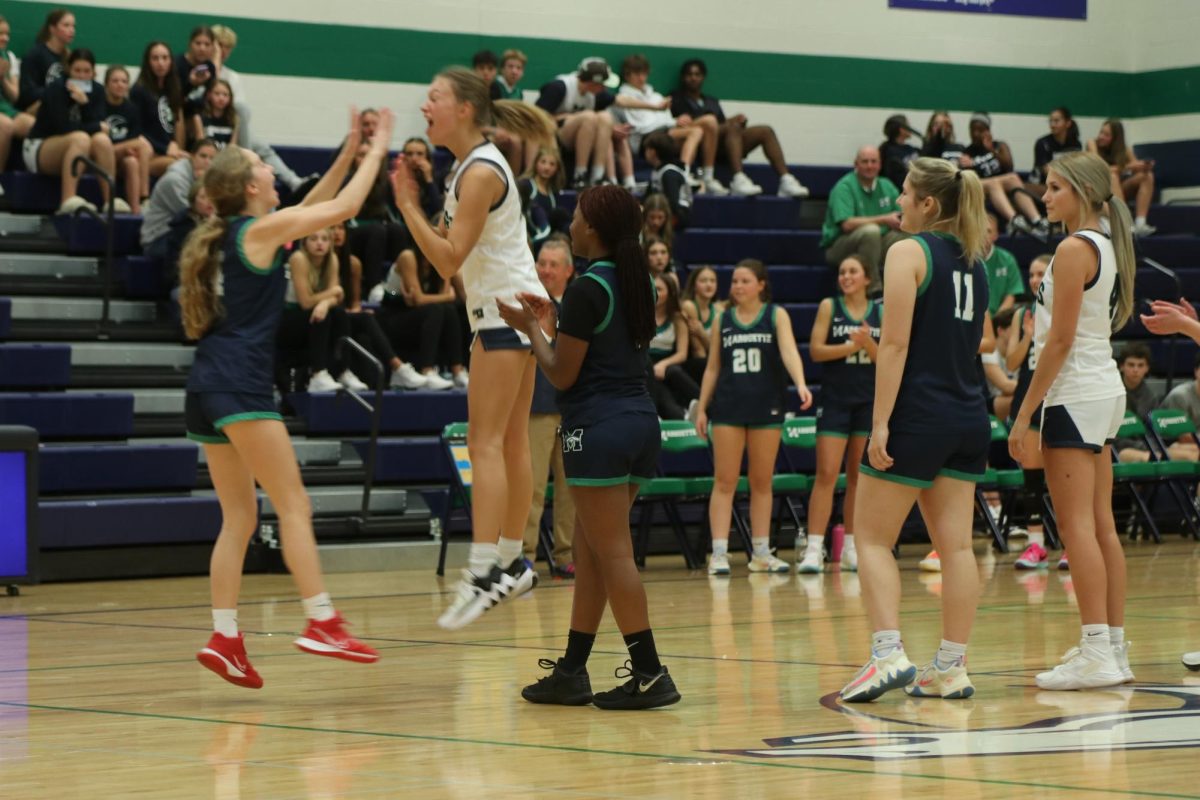Mia Schaefer, senior, doesn’t have much to worry about when it comes to maintaining chemistry with her teammates. The Mavericks Basketball Organization keeps Schaefer and six other varsity players on the same court year round.
“I’ve been playing for the Mavericks for two and a half years, and Jess [Aldenderfer], Kiersten [Powell] and Hayley [Ott] pretty much have been with me the entire time,” Schaefer said. “But I’ve also played with them since fourth grade.”
These bonds have kept her motivated along the way and traveling to tournaments in the spring and summer also had its benefits.
“I always used club to stay conditioned and grow my skills for when high school season came around,” Schaefer said.
Club sports provide athletes with the chance to play competitively, develop their abilities and further the recruiting process.
For Colyn Wright, senior, the Adidas Athletics Baseball Organization brought the college coaches to him.
“Every week, the organization would bring in coaches I could pitch in front of, and I threw a quick bullpen and got an offer on the spot,” Wright said.
Wright, who is committed to play for Westminster College next year, said high school sports focus on the student in addition to the athlete.
“The focus has to be higher because high school coaches keep you accountable,” Wright said.
This emphasis on academics is because many MHS coaches also see their players in class. It is also supported by GPA eligibility requirements, Scholar-Athlete recognition and class attendance policies.
Club coaches are generally excluded from this aspect of student development. Teammate relationships are also at a disadvantage.
“I feel closer with my high school teammates,” Wright said. “I see them every day, and I play ball with them for at least four years, unlike club, where it’s a new team every year.”
Wright’s dad, Chris Wright, head JV baseball and softball coach, has helped walk Colyn through 13 years of club soccer and baseball. He said there are stark differences between the two experiences.
Facilities, custom gear and well-attended showcases are some of the perks of playing for a club. However, Chris said travel for club baseball has cost him more than $2,000 each season. Meanwhile, most high school teams only require players to purchase a set of uniforms, sometimes for less than $100.
“Club is more individualistic where you’re playing with teammates from nine different schools and you only see them in the summer, tournaments and during practices once a week,” Chris said. “High school is much more of a team atmosphere. Colyn has grown up with these kids.”
Michael Stewart, head football coach, has his own concerns when it comes to clubs. He said the club scene for 11-man tackle football has gained little traction.
Football is physically taxing and to be played year-round like lower-impact sports could mean burnout and injury from overuse.
“I think one of the things that high school coaches fear the most now is sport specialization,” Stewart said. “We want our football kids to be playing multiple sports. Use your athletic ability to better yourself and showcase yourself, and then let the college stuff work itself out.”
While other sports rely heavily on clubs for the recruiting process, football is more focused on the high school season.
“It’s all about what you show out here on Friday nights,” Stewart said. “What you put out there for your high school team, that’s going to earn you the scholarships and the awards.”







